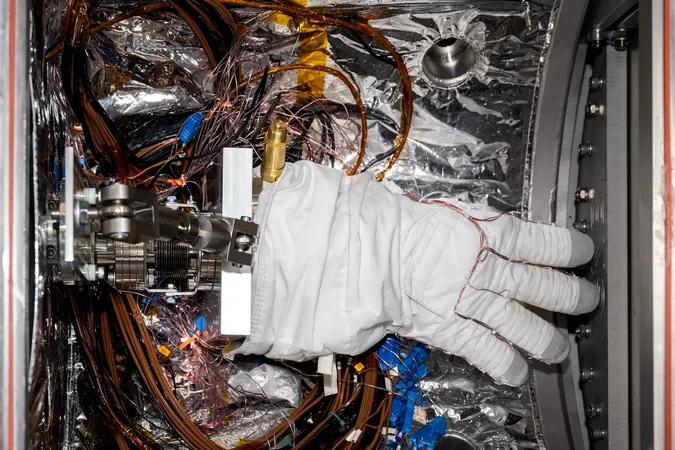
NASA's Lunar Missions Demand High-Tech Gloves and Boots for Frigid Conditions
2025-04-25
Author: Ling
NASA's Moon Missions Face Chilly Challenges
As NASA gears up for its ambitious return to the Moon, preparing astronauts for the frigid, shadowy environments of the lunar south pole has become a top priority. Unlike the warm conditions faced during the Apollo missions, this next chapter in lunar exploration requires cutting-edge technology to ensure astronauts remain warm and functional in extreme cold.
Meet CITADEL: The Ultimate Testing Ground
NASA's engineers are set to conduct rigorous tests on new spacesuit designs in the state-of-the-art Cryogenic Ice Testing, Acquisition Development, and Excavation Laboratory—affectionately known as CITADEL. This facility, initially crafted for robotic missions to icy celestial bodies, is now the proving ground for human exploration. With its ability to reach frostbite-inducing temperatures of -370 degrees Fahrenheit (-223 degrees Celsius) using compressed helium, CITADEL is pivotal in assessing the durability of astronaut gear.
Gloves and Boots: The Key to Lunar Survival
Zach Fester, an engineer with NASA's Advanced Suit Team, emphasizes the importance of gloves and boots, which endure direct contact with ice-cold surfaces and equipment. As astronauts prepare to navigate lunar terrains, they will need gear that withstands harsh conditions while allowing for dexterity and movement.
Innovative Testing Methods: Goodbye, Hand Testing!
Gone are the days of using astronauts for chill tests inside glove boxes. Instead, NASA now employs sophisticated manikin hands and feet equipped with fluid systems that mimic blood flow, alongside sensors that gather temperature data. This leap in testing methodology ensures that astronaut gear is fully optimized for lunar expeditions.
The Artemis 3 Mission: A Game Changer for Lunar Exploration
Scheduled for a 2027 launch, the Artemis 3 mission aims to land astronauts at the lunar south pole, a region of immense scientific intrigue due to its icy shadows. The extreme cold, with temperatures dipping as low as -414 degrees Fahrenheit (-248 degrees Celsius), poses serious challenges. The Artemis astronauts can only stay in these areas for a limited time, highlighting the urgency for effective protective gear.
Fashion Meets Function with New Spacesuits
Astronauts will be sporting the next-generation AxEMU (Axiom Extravehicular Mobility Unit) suits, developed in collaboration with Axiom Space and Prada, combining style with function to enhance mobility and safety on the Moon.
Future of Space Exploration Depends on Rigorous Testing
With ongoing tests in CITADEL, NASA is focused on assessing current gear and defining a capability gap for future designs. As Shane McFarland, technology development lead, puts it, this testing is crucial for understanding how long gloves and boots can perform in lunar conditions.
As the next lunar missions approach, one thing is crystal clear: NASA's perseverance in developing advanced, climate-resistant gear is vital for the safety and success of astronauts venturing into the Moon's stark, icy terrain.



 Brasil (PT)
Brasil (PT)
 Canada (EN)
Canada (EN)
 Chile (ES)
Chile (ES)
 Česko (CS)
Česko (CS)
 대한민국 (KO)
대한민국 (KO)
 España (ES)
España (ES)
 France (FR)
France (FR)
 Hong Kong (EN)
Hong Kong (EN)
 Italia (IT)
Italia (IT)
 日本 (JA)
日本 (JA)
 Magyarország (HU)
Magyarország (HU)
 Norge (NO)
Norge (NO)
 Polska (PL)
Polska (PL)
 Schweiz (DE)
Schweiz (DE)
 Singapore (EN)
Singapore (EN)
 Sverige (SV)
Sverige (SV)
 Suomi (FI)
Suomi (FI)
 Türkiye (TR)
Türkiye (TR)
 الإمارات العربية المتحدة (AR)
الإمارات العربية المتحدة (AR)